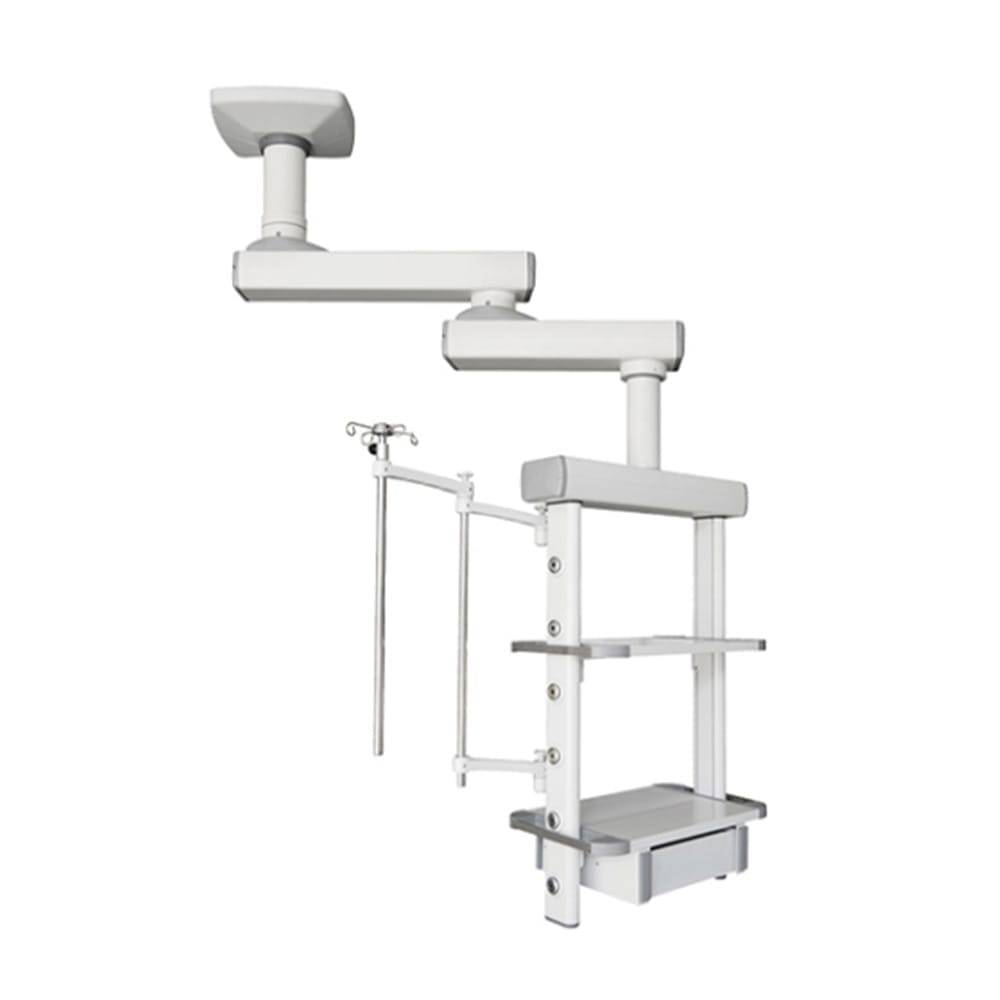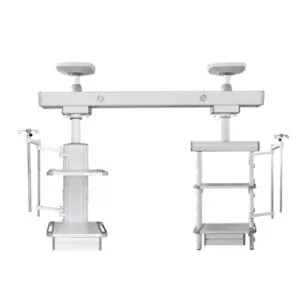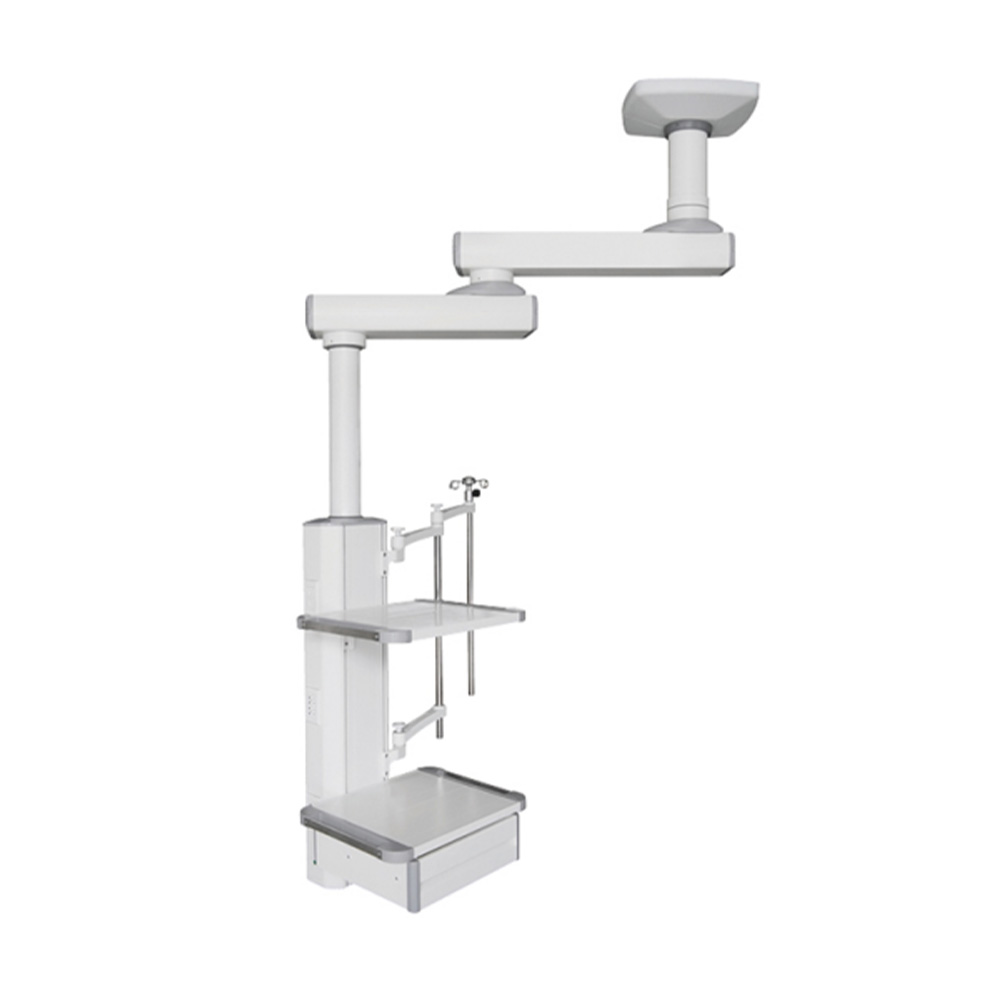Адрес
304 North Cardinal St.
Дорчестер-центр, Массачусетс 02124
Часы работы
С понедельника по пятницу: с 7:00 до 19:00.
Выходные: 10.00 - 17.00
Добро пожаловать в мой блог!
Прежде чем мы погрузимся в контент, я бы хотел, чтобы вы присоединились ко мне на моих платформах социальных сетей, где я делюсь большим количеством идей, взаимодействую с сообществом и публикую обновления. Вот как вы можете связаться со мной:
Фейсбук:https://www.facebook.com/profile.php?id=100071234835011
LinkedIn:https://www.linkedin.com/company/74943205/admin/dashboard/
Ютуб:www.youtube.com/@shandongexpertmedicalequip4695
ТикТок:www.tiktok.com/@expertmedical
Теперь давайте начнем наше путешествие вместе. Надеюсь, вы найдете здесь контент проницательным, интересным и ценным.

В современных хирургических условиях медицинские подвесные системы стали незаменимым компонентом. Разработанные для обеспечения удобного доступа к электропроводке, газопроводам и необходимому хирургическому оборудованию, эти системы произвели революцию в планировке операционных. Поскольку больницы и хирургические центры стремятся к повышению эффективности, гигиены и безопасности, интеграция интеллектуальных и эргономичных медицинских подвесных систем приобрела первостепенное значение.
В этой статье подробно рассматривается, как медицинские подвесные системы формируют облик современных хирургических кабинетов. Мы рассмотрим их компоненты, преимущества, области применения и факторы, которые следует учитывать покупателям, а также дадим подробный ответ на часто задаваемые вопросы и полезную таблицу с практическими рекомендациями. Независимо от того, оборудуете ли вы новый хирургический кабинет или модернизируете существующий, понимание принципов работы этих систем крайне важно для принятия обоснованных решений.
Медицинские подвесные системы — это сложные устройства для доставки оборудования, используемые в операционных, отделениях интенсивной терапии (ОИТ) и процедурных кабинетах. Разработанные с учётом мобильности и модульности, эти системы крепятся к потолку или стене и служат для подвешивания различных медицинских коммуникаций, таких как газовые розетки, розетки питания, порты передачи данных, кронштейны для мониторов, инфузионные стойки и платформы для хранения.
По сути, медицинские подвесные системы предназначены для оптимизации рабочего процесса. Традиционно больничные палаты были загромождены кабелями, резервуарами и оборудованием, которые занимали пространство и ограничивали мобильность персонала. Подвесные системы устраняют эти недостатки, поднимая всё над полом и размещая в тщательно организованных модульных кронштейнах и сервисных головках.
Каждый кулон обычно включает в себя:
Их назначение не только организационное, но и функциональное. Подвесные системы повышают стерильность, упрощая уборку полов, и упрощают действия в чрезвычайных ситуациях, централизуя доступ к инженерным коммуникациям и оборудованию.

Современная хирургическая среда отличается высокой сложностью, динамичностью и требует высокой степени координации. Инструменты и технологии, используемые в хирургии, – от роботизированных процедур до малоинвазивных методик – стали сложнее и многочисленнее. Чтобы соответствовать этим достижениям, медицинские учреждения должны внедрять современную и эффективную инфраструктуру.
Медицинские подвесные системы напрямую решают некоторые из наиболее острых вопросов при проектировании хирургических кабинетов:
По мере развития хирургической помощи физическое пространство должно адаптироваться. Медицинские подвесные системы являются прямым ответом на эту эволюцию, повышая эффективность без ущерба для безопасности и гигиены.
Понимание различных компонентов, из которых состоит медицинская подвесная система, крайне важно для покупателей и проектировщиков. Каждый компонент играет уникальную роль в повышении функциональности и надежности устройства. Ниже подробнее рассмотрим, что включают в себя эти системы:
Механизм рычага, являющийся основой подвесной системы, обычно изготавливается из лёгкого и высокопрочного алюминия. Он обеспечивает многонаправленное движение и вращение, обеспечивая точное позиционирование системы во время процедур. Рычаги могут быть одинарными, двойными или шарнирными, в зависимости от необходимого уровня гибкости.
Сервисная головка — это «центр управления» подвесного блока. Она оснащена портами для подачи медицинских газов, таких как кислород, закись азота, воздух и вакуум. Здесь также расположены электрические розетки, сетевые порты и USB-разъемы. Часто доступны индивидуальные конфигурации, соответствующие планировке помещения и специальным требованиям.
Это обеспечивает безопасную подачу жизнеобеспечивающих газов непосредственно к операционному полю. Количество газовых портов можно настроить в зависимости от того, используется ли система для анестезии, хирургического вмешательства или интенсивной терапии.
Прочные и устойчивые полки обеспечивают лёгкий доступ к инструментам, лекарствам и мониторам. Многие подвесные системы включают в себя стойки для инфузий, стойки для внутривенных вливаний и даже шарнирные кронштейны для крепления ультразвуковых или диагностических приборов.
Эффективная организация кабелей крайне важна для поддержания порядка на рабочем месте. Встроенные каналы и крючки гарантируют, что кабели питания и передачи данных не будут провисать и не создадут опасности споткнуться.
Синергия этих компонентов приводит к созданию системы, которая повышает удобство использования, безопасность и производительность в отделениях интенсивной терапии.
В зависимости от клинической ситуации и предполагаемого использования медицинские подвесные системы могут значительно различаться по конструкции и конфигурации. Вот основные типы:
Они подвешиваются непосредственно к потолку и обеспечивают максимальную свободу и экономию пространства. Они широко используются в операционных и позволяют разместить все основные коммуникации и аксессуары.
Эти системы, используемые в отделениях интенсивной терапии, обеспечивают лёгкий доступ к критически важным устройствам, аппаратам ИВЛ и мониторам. Они часто оснащены двумя кронштейнами и поддерживают различные конфигурации.
Эти системы, разработанные специально для анестезиологов, обеспечивают надежный доступ к газовым линиям, отсасывающим устройствам и наркозным аппаратам, часто в пределах досягаемости одной руки.
Благодаря двум независимо движущимся рычагам эти системы идеально подходят для сложных гибридных операционных. Они обеспечивают повышенную гибкость и лучшее распределение нагрузки при работе с более тяжёлыми или несколькими устройствами.
Эти системы, специально разработанные для использования в хирургических отделениях с высокой посещаемостью, отличаются модульностью, эргономичным позиционированием и полной интеграцией с хирургическим освещением и мониторами.
Выбор правильного типа зависит как от предполагаемых процедур, так и от физических ограничений помещения.
| Характерная черта | Описание | Подходит для |
|---|---|---|
| Угол поворота руки | Регулируется до 330°, обеспечивая точное позиционирование | Все хирургические среды |
| Несущая способность | Выдерживает до 180 кг в зависимости от конструкции | Операционные с большим количеством оборудования |
| Конфигурация выхода газа | Поддерживает несколько газов с цветными выходами | Анестезия и хирургия |
| Порты питания и данных | Может включать до 24 электрических розеток и сетевых подключений. | Цифровые операционные и отделения интенсивной терапии |
| Модульность полок для оборудования | Съемные, регулируемые по высоте полки | Отделения интенсивной терапии для детей и взрослых |
| Тормозная система | Пневматические или электромагнитные тормоза для безопасности и устойчивости | Высокоточные хирургические задачи |
| Антимикробное покрытие | Поверхность обработана для снижения выживаемости патогенов | Зоны, чувствительные к инфекции |
| Функции аварийной остановки | Встроенные кнопки для быстрого отключения коммунальных услуг | Травматологические отделения и отделения неотложной помощи |
Эта таблица поможет вам быстро определить основные характеристики и сопоставить их с вашими клиническими требованиями.

Современные медицинские подвесные системы обладают многочисленными преимуществами, что делает их привлекательной долгосрочной инвестицией для учреждений здравоохранения:
Персонал может легко перемещать подвесные кронштейны и регулировать высоту и угол наклона оборудования, снижая нагрузку. Это делает длительные процедуры менее физически утомительными и более эффективными.
Подняв кабели и инструменты над полом, пол становится легче дезинфицировать. Подвесные системы часто имеют антибактериальное покрытие, что дополнительно снижает риск заражения.
Подвесные кронштейны надежно фиксируются и оснащены тормозами для предотвращения случайного перемещения. Меньше кабелей на полу означает меньшую вероятность поскользнуться или споткнуться.
Медицинские технологии быстро развиваются. Модульные подвесные системы можно модернизировать, добавляя новые газовые линии, порты передачи данных или аксессуары без полной замены.
Аккуратная, опрятная хирургическая комната выглядит профессионально и внушает доверие как пациентам, так и персоналу. Подвесные системы помогают добиться такого эффекта.
Инвестируя в эти системы, медицинские учреждения получают возможность улучшить результаты лечения, снизить эксплуатационные риски и создать более безопасную хирургическую среду.
При выборе медицинской подвесной системы учитывайте не только стоимость. Обратите внимание на удобство использования, гибкость и соответствие требованиям. Вот на что следует обратить внимание:
Разные системы оптимизированы для разных задач. Хирургическая консоль может не подойти для отделения интенсивной терапии или эндоскопического отделения.
Тщательно измерьте размеры помещения. Подвесные светильники должны свободно вращаться, не задевая стены, светильники или другое оборудование.
Составьте список всего оборудования, которое будет установлено (мониторы, полки, вентиляторы), и убедитесь, что система может выдержать общий вес.
Выбирайте системы с модульной конструкцией, чтобы обеспечить возможность модернизации в будущем. Избегайте универсальных решений, которые могут ограничить дальнейшее развитие.
Проверьте, соответствует ли система стандартам ISO, CE или FDA. Это гарантирует безопасность и совместимость с передовыми мировыми практиками.
Выбор правильной системы требует сотрудничества архитекторов, клинических инженеров и медицинского персонала.
Перед установкой медицинской подвесной системы необходимо учесть несколько факторов:
При правильном планировании монтаж становится оптимизированным процессом, который сразу же добавляет ценность.

Правильное обслуживание продлевает срок службы и надежность медицинских подвесных систем. Ознакомьтесь со следующими рекомендациями:
By implementing a structured maintenance plan, hospitals can avoid costly downtimes and ensure patient safety.
Medical pendant systems are not just functional tools—they are transformative solutions for modern surgical environments. With the ability to improve workflow, enhance safety, and support the ever-growing range of medical technologies, they have become indispensable assets in operating rooms and intensive care units.
If you’re planning to build or renovate your facility with cutting-edge pendant systems, связаться с нами today for a tailored consultation and quote. Let us help you create a safer, smarter, and more efficient surgical space.
Как долго делать медицинские подвесные системы обычно последний?
With proper use and maintenance, most systems last 10–15 years or more.
Can I customize the pendant configuration?
Yes, most providers offer fully customizable modules for gas, power, data, and accessories.
Are they suitable for all types of hospitals?
Yes, from small clinics to large hospitals, pendant systems improve efficiency across the board.
